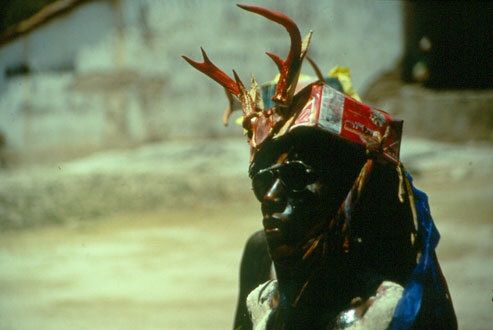The ritual of the Judea Cora, one of the sacred practices of Amerindian cultures
The Judea Cora is one of the most intense and authentic rituals of the indigenous world, in which to this day elements before evangelization is kept alive.

When the canyon of the San Pedro River, in the Nayar sierra, is illuminated by the first full moon after the spring equinox, in the community of Rosarito begins the sacred time of sowing, as well as one of the most intense and authentic rituals of the indigenous world, in which to this day, elements from before the evangelization are kept alive, fused with others from the XVII century: the Judea Cora; it is when the child Christ dies and resurrects as a symbol of the burial of the seed. After Easter, the seed is prepared to penetrate the earth.
The Judea Cora is part of a large native theater complex from the Atemajac Valley, what is today Guadalajara, Jalisco, to the state of Arizona, in the United States, celebrated by cultures of aboriginal roots, within the Mexican territory, mainly Coras and at least 10 Huichol settlements. While the Huicholes emphasize the issue of resurrection, the Cora emphasize the issue of death.
To understand the Cora Judea, the first thing to consider is that the indigenous people do not live a linear time but a cyclical conception of time, so every year it is necessary to repeat the ritual and look for the closest way to reproduce it as it was done the previous year; the indigenous people are convinced that their religious practice is an action that their ancestors did.
The time of the Judea Cora begins on Ash Wednesday and concludes on Resurrection Sunday, but the holy days are exactly Thursday, Friday, and Saturday. It is about the confrontation of Jews of the side of darkness against the Jews of the side of light.
The first group is formed by the army of the west, formed in two rows, at the front of each is a captain and corporals integrate the formation of fighters. The main characters of the bando de la luz are Jesus Christ, represented by the crucifix of the temple and a child, the officials of the temple, the mayordomos, and the religious images of the community, as well as two small ones that symbolize the goddess of the earth and a group of men, called variceros.
Musicians also participate in the pitero, the tamborilero, and a character in charge of resurrecting the sides when they have been defeated. The Jews "erase themselves", that is to say, they paint their entire bodies with burnt corn polish and white and ocher clays as a sign that they cease to be what they are to become astral warriors.
At least 10 different representations are depending on the community, the most widespread is the one that corresponds to the eastern part, where the community of Jesús María is located, where papier-mâché masks are made as part of the attire, which was introduced in 1970.
Unlike other communities, the Rosarito community maintains a strict discipline; in other towns, the mestizo merchants come to sell alcoholic beverages and the festivity becomes violent, mainly on Good Friday when the sides engage in combat.
In Rosarito extreme care is taken so that the combats are feigned so that there are no injuries and strangers can only enter the community by means of a special permission of the traditional authorities, because from Wednesday night nobody can go out or pass to the town until Saturday night.
Likewise, in Rosarito there are five elements to characterize the Jews: the machete made of quassin wood, they may or may not wear a mask but a fundamental object is the deer antlers that some men wear on their foreheads, the stuffed badger, the five-hole flute and the double drum, instruments that are exclusive to the time of Lent and Holy Week.
For the Coras the stars are deer because they are nocturnal animals and the fighters are considered astral warriors. Meanwhile, the badger eats the corn cobs when they are in the cornfield and the corn represents Christ.
During the three holy days, there are actions derived from rituals of the evangelizers such as processions with the images, candles in the temple, the images of saints also die with Christ as well as the command rods of the traditional authorities, which during these days lose their power.
It is necessary to put incense and light candles and beeswax candles, to produce sacred smoke; all the time the Jews have to smoke tobacco and during the journey of the Christ child, a person carries a pewter pot and embers burning dry chili that makes all the people cry.
It is an ethnic religion that seeks to reproduce the social group. There are three whole days of ritual development in different scenarios, so it is necessary to run from one side to another if you want to observe the events from the right angle. The Coras practically do not sleep during the celebration.
Source: INAH




